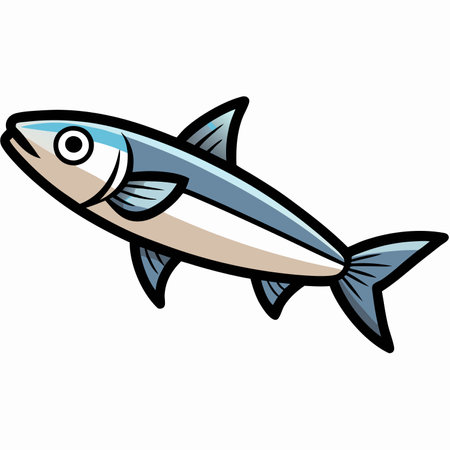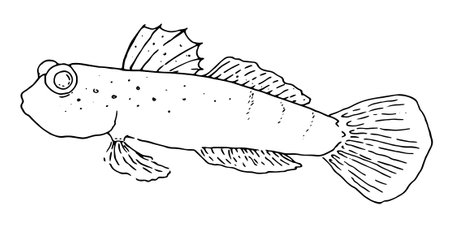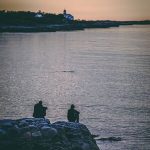Introduction to Northern Pike and Muskie Fishing in the U.S.
Northern Pike and Muskellunge—often called “Muskie”—are two of the most iconic freshwater game fish found across the northern United States. For countless American anglers, chasing trophy specimens of these toothy predators is more than just a hobby; it’s an obsession. Both species are famed for their aggressive strikes, impressive size, and the challenge they present when hooked. While they share similar habitats and sometimes overlap in range, Northern Pike and Muskie have distinct characteristics that set them apart both in appearance and behavior.
Below is a quick comparison highlighting the key differences between these two top-tier sport fish:
| Feature | Northern Pike | Muskellunge (Muskie) |
|---|---|---|
| Average Trophy Size | 35-45 inches | 40-55 inches |
| Coloration | Light spots on dark body | Dark spots/bars on light body |
| Preferred Habitat | Lakes, slow rivers, marshes with weeds | Larger lakes and rivers with clear water |
| Fighting Style | Aggressive, explosive runs | Cunning, powerful surges |
| Main Appeal to Anglers | Abundant, hard-hitting action | Rare, elusive “fish of 10,000 casts” |
The thrill of landing a trophy pike or muskie is unmatched—these fish are known for their size, strength, and sheer unpredictability at the end of your line. Across the U.S., certain states stand out as hotbeds for record-breaking catches and memorable fishing adventures. In this guide, we’ll explore which states offer the best opportunities for chasing giants and what makes each destination special for serious Northern Pike and Muskie anglers.
Top States for Northern Pike Fishing
When it comes to trophy northern pike fishing in the U.S., a few states stand out as prime destinations. These states not only offer impressive pike populations, but also provide diverse habitats and ample opportunities for anglers to land that fish of a lifetime. The following table highlights the top states, their best-known waters, and the peak seasons for targeting trophy northern pike:
| State | Prime Locations | Best Fishing Season |
|---|---|---|
| Minnesota | Lake of the Woods, Mille Lacs Lake, Leech Lake | Late spring to early summer; ice-out and fall are also productive |
| North Dakota | Devils Lake, Lake Sakakawea | Spring (post-spawn), late summer, and fall |
| Wisconsin | Lake Winnebago, Green Bay, Chippewa Flowage | Spring through early summer and fall months |
| Montana | Fort Peck Reservoir, Nelson Reservoir | Late spring and early summer; early fall |
| Alaska | Minto Flats, Yukon River tributaries | Late May through July; September for aggressive feeding |
Minnesota: Land of Giants
Minnesota consistently ranks at the top for trophy northern pike due to its abundance of large lakes with healthy forage bases. Anglers here often target weed beds and drop-offs during the cool months and find that both traditional casting and trolling techniques yield big results.
North Dakota & Wisconsin: Consistent Action
Both North Dakota and Wisconsin are known for producing high numbers of quality pike. Devils Lake in North Dakota is especially famous during the post-spawn period, while Wisconsin’s vast network of lakes provides nearly year-round action.
Montana & Alaska: Wild Adventures
If you’re seeking an adventurous trip, Montana’s reservoirs and Alaska’s remote waters offer incredible opportunities to catch truly wild pike. These locations are perfect for anglers looking to escape crowds and experience untamed fishing environments.

3. Best States for Muskie Fishing
When it comes to trophy muskie fishing, several U.S. states stand out as premier destinations for anglers seeking the elusive “fish of 10,000 casts.” Each state boasts its own legendary waters, unique fishing culture, and record-setting catches that have shaped muskie lore nationwide.
Muskie Hotspots Across the United States
| State | Top Lakes/Rivers | Notable Features |
|---|---|---|
| Minnesota | Lake Mille Lacs, Leech Lake, Lake Vermilion | Known for producing giants over 50 inches; strong catch-and-release culture; active muskie clubs |
| Wisconsin | Lac Vieux Desert, Chippewa Flowage, Green Bay | Birthplace of American muskie fishing; abundant public access; muskie tournaments galore |
| Michigan | Lake St. Clair, Detroit River, Torch Lake | Year-round action; urban angling opportunities; consistent big fish production |
| Kentucky | Cave Run Lake, Green River Lake | Southern muskie action; extended season; renowned spring and fall bites |
| Pennsylvania | Allegheny River, Pymatuning Reservoir, Susquehanna River | Diverse fisheries; strong stocking programs; growing reputation among trophy hunters |
| New York | St. Lawrence River, Chautauqua Lake, Niagara River | Home to world-class river monsters; scenic waterways; traditional and modern techniques thrive here |
Record Catches & State Fishing Cultures
Minnesota and Wisconsin: These two states are often at the top of every muskie angler’s bucket list. Minnesota currently holds the official state record with a 56-inch monster caught on Mille Lacs Lake. Both states foster a dedicated catch-and-release ethos and host numerous muskie expos and events every year.
Kentucky: While not traditionally thought of as a muskie state, Kentucky’s Cave Run Lake is famous for its early and late-season action and has produced fish over 50 inches.
Pennsylvania & New York: Rivers like the Allegheny and St. Lawrence are gaining fame for their numbers of heavy-bodied muskies. Pennsylvania’s expanding stocking efforts have improved prospects statewide, while New York’s St. Lawrence River is revered for producing some of the heaviest muskies on record.
Michigan: The open waters of Lake St. Clair produce muskies in both size and numbers, and the Detroit River is an urban hotspot that puts trophy fish within reach of city dwellers.
Muskie Culture: Tournaments & Traditions
Muskie fishing in these states is more than just sport—its a way of life. Annual tournaments such as Wisconsin’s National Championship Musky Open attract thousands of anglers. Local bait makers craft time-honored lures passed down through generations, and muskie clubs actively promote conservation and youth involvement to ensure these legendary fisheries continue to thrive.
4. Essential Gear and Techniques
Landing trophy northern pike and muskie in the best U.S. states takes more than just luck—it requires the right gear and know-how. American anglers have honed their tackle and techniques over generations, making these apex predators a true test of skill. Here’s what you’ll need to maximize your chances in hotspots like Minnesota, Wisconsin, Michigan, North Dakota, and New York.
Recommended Rods, Reels, and Line
| Gear | Recommended Specs | Why It Matters |
|---|---|---|
| Rod | Medium-heavy to heavy action; 7-9 feet | Longer rods provide better casting distance and leverage for big fish. |
| Reel | Baitcasting or large spinning reels with high line capacity | Strong drag systems are critical for battling trophy-size fish. |
| Line | Braided line, 50-80 lb test; Fluorocarbon leader (at least 12 inches) | Braid offers strength and sensitivity; leaders prevent bite-offs from toothy jaws. |
Lures That Get Results
The lure selection for northern pike and muskie is all about size, action, and flash. Locals often swear by:
- Bucktail Spinners: Classic choice for covering water quickly.
- Large Soft Plastics: Swimbaits or jerkbaits that mimic wounded baitfish.
- Spoons: Flashy metal spoons are irresistible to aggressive predators.
- Topwater Lures: For heart-stopping strikes in weedy shallows, especially at dawn or dusk.
Techniques Used by American Anglers
- Casting Along Weed Edges: Pike and muskie love ambushing prey from cover.
- Trolling Deep Channels: Effective in larger lakes and rivers during summer and fall.
- “Figure Eight” Maneuver: When a fish follows to the boat, use this rod movement to trigger a strike right at the surface—a staple among Midwest muskie hunters.
- Pike/Muskie Sucker Fishing: In late fall, live suckers rigged beneath a bobber can produce giants in cooler waters.
Pro Tip:
Always use long-nose pliers or jaw spreaders when handling these toothy fish. A quality net with rubberized mesh helps both the angler and the catch—ensuring safe release of trophies for future generations. With the proper gear and proven techniques, you’ll be ready for your shot at a record-breaking northern pike or muskie in America’s top states.
5. Licensing and Conservation
When it comes to trophy Northern Pike and Muskie fishing in the United States, understanding licensing requirements, local regulations, and conservation efforts is essential. Each state has its own set of rules to ensure sustainable fisheries for future generations of anglers. Below is a table summarizing key licensing details and conservation practices in some of the top states:
| State | License Type | Regulations Highlights | Conservation Efforts |
|---|---|---|---|
| Minnesota | Resident & Non-resident Fishing License | Strict size limits; slot limits for trophy fish; seasonal restrictions | Pike and muskie tagging programs, habitat restoration projects |
| Wisconsin | Annual Fishing License or 1-Day Pass | Bag limits for muskellunge (usually one per season); minimum length limits | Stocking initiatives, invasive species control, catch-and-release awareness campaigns |
| North Dakota | Resident & Non-resident Licenses (yearly or short-term) | No closed season for pike; daily and possession limits enforced | Aquatic habitat improvement grants, youth education programs |
Why Licensing Matters
A valid fishing license not only allows you to fish legally but also contributes directly to funding conservation projects, fish stocking, research, and public access improvements. Purchase your license online through each state’s Department of Natural Resources or at authorized retailers before hitting the water.
Local Regulations: Know Before You Go
States often have specific rules regarding gear restrictions (like barbless hooks), designated catch-and-release waters, and seasonal closures aimed at protecting spawning fish. Always check the latest regulations for your target location, as fines for violations can be hefty.
Sustainable Trophy Fishing Practices
Trophy fishing is about both the thrill of the catch and ensuring those big fish are still there for tomorrow. Practicing proper catch-and-release techniques—using rubber nets, minimizing air exposure, and handling fish with wet hands—can greatly increase survival rates after release. Respect all posted guidelines on local waterways and consider supporting conservation groups dedicated to preserving these apex predators.
6. Planning Your Fishing Trip
To make the most out of your quest for trophy Northern Pike and Muskie, thorough trip planning is essential. Here are some practical tips for timing your adventure, finding the right accommodations, and connecting with experienced local guides or outfitters.
When to Go: Timing Your Trophy Hunt
| Season | Advantages |
|---|---|
| Spring (March-May) | Post-spawn activity means hungry fish; ideal for aggressive strikes. |
| Summer (June-August) | Consistent action; weed beds are prime locations for ambush predators. |
| Fall (September-November) | Bigger fish feeding heavily before winter; fewer crowds on the water. |
Where to Stay: Lodging Options Near Top Waters
- Lakeside Cabins: Offer easy access to early morning or late evening fishing sessions.
- Fishing Resorts: Often provide boat rentals, bait shops, and cleaning stations.
- Campsites: For a more rustic experience close to nature and prime waters.
Popular States & Recommended Stays
| State | Suggested Area | Lodging Type |
|---|---|---|
| Minnesota | Lake of the Woods | Lodge or lakeside cabin |
| Wisconsin | Hayward Lakes Area | Fishing resort |
| North Dakota | Devils Lake | Campsite or rental cabin |
Connecting with Local Guides & Outfitters
- Book a licensed fishing guide: They know where the trophies lurk and which lures work best in current conditions.
- Check state DNR websites: Many offer lists of certified outfitters and seasonal fishing reports.
- Visit local bait and tackle shops: Great places for insider tips, up-to-date lake conditions, and sometimes guide referrals.
Pro Tip:
If you’re new to the area or targeting a new species, investing in a full- or half-day guided trip can dramatically boost your odds of landing that bucket-list fish. Plus, many guides handle boat logistics, provide gear, and share valuable local knowledge—making your trophy hunt both productive and memorable.


